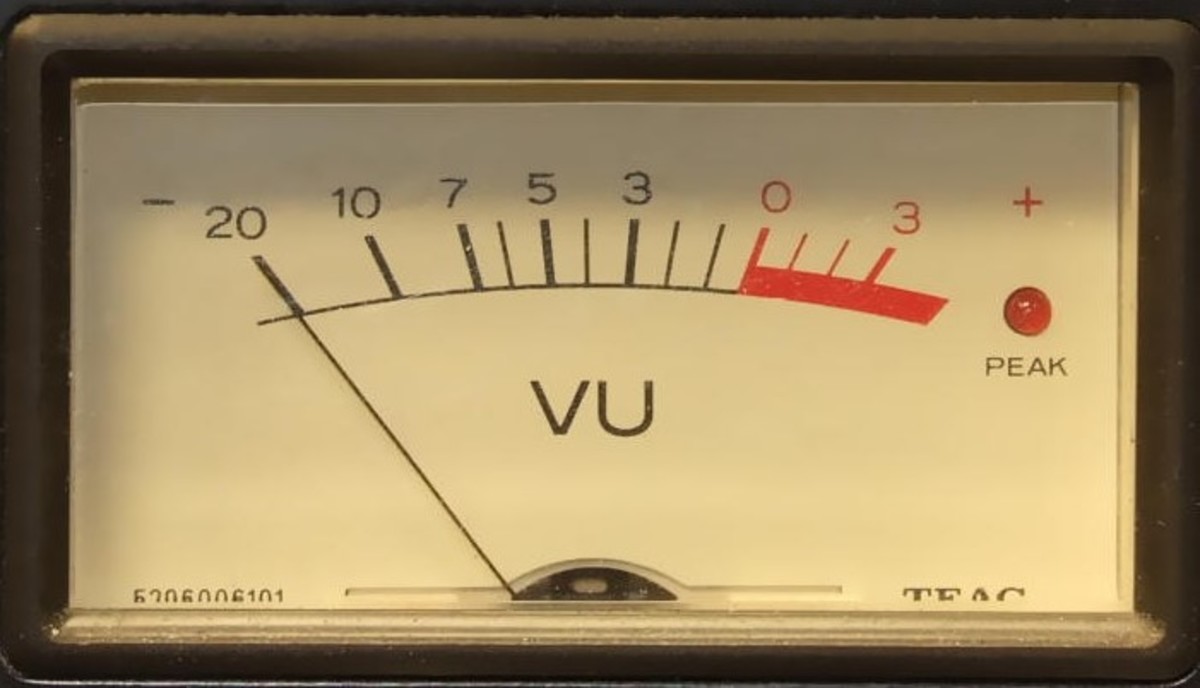dB with no suffix dB with a suffix in brackets dB with a unit not in brackets
1) dB With No Suffix
This is a logarithmic ratio. It is dimensionless, meaning it has no units associated with it.It is used to express a value such as the gain of an amplifier, the loss of an attenuator or the ratio between any two like quantities.To convert this logarithmic ratio to a linear ratio, you can use the following formula: For example, if V2 = 10V and V1 = 5V, then we get: So a doubling of voltage from V1=5V to V2=10V is equivalent to 6dB. If a signal has gone up by 12dB then the voltage ratio (V2/V1) can be calculated as follows: So 12dB is equivalent to four times the voltage ratio, which make sense when you consider 6dB is a doubling of the voltage ratio, so four times is essentially 6dB + 6dB, or a doubled voltage twice.
2) dB With a Suffix in Brackets
This is an absolute value and has units which are denoted by the contents of the brackets.For example, 110 Volts can be expressed as 40.83 dB(V): Similarly, 47.6dB(V) can be expressed as 240V as follows: In audio, the unit we use is not Volts, but 0.775 Volts. For example, 7.75V can be converted to dB(0.775V) as follows: Volts = 240 V So, 20dB(0.775V) is another way of writing 7.75V. As the expression dB(0.775V) is cumbersome, it is usually abbreviated to dBu. 0dBu can be calculated as follows: So 0dBu = 0.775V. As explained earlier, 6dBu is double that, so would be 1.55V and 12dBu is four times, so would be 3.1V. 1 x 0.775V = V2 V2 = 0.775V
3) dB With a Suffix Not in Brackets
When a dB has a suffix not in brackets, it gives us an indication of how the measurement was taken and may also imply a reference. For example, sound pressure level is expressed in dBA. This means that the sound pressure is referenced to 20µNm-2, which is the threshold of hearing, and is measured via the “A” weighting network.
dBm
The dBm indicates that the measurement relates to the amount of signal that is required to dissipate 1mW of power into a 600Ω termination. Historically, 600Ω was typical for both input and output.impedances, When a dBm is used, it means that measurements were taken with 600Ω terminations. When you use P = V2/R, you can see that 1mW of power causes a voltage drop of 0.775V with 1mW of power. This is the origin of the dBu measurement.
dBFS
Modern audio equipment is likely to be digital, and the most important reference level is the one that signifies when you run out of quantising levels, which is the point that the signal has reached the maximum or overload level. This overload level is defined to be 0dBFS, and the FS stands for “Full Scale”. For practical purposes, -18dBFS is given the analogue level of 0dBu by the European Body EBU. 0dBu is also known as PPM 4 on Peak Programme Meters. This level was chosen to provide sufficient headroom to deal with transients so that digital systems are not overloaded, without going so low that noise becomes an issue. In the USA, SMPTE define 0dBu as -20dBFS.
Analogue Line Level
Line level is the nominal signal level on a cable. Typically for professional audio, this is 0dBu for line level, or -60dBu, which is much lower for microphone level. Domestic equipment tends to run at a lower line level, and is nominally around 10dB lower than professional line level and is nominally about -10dBu.
Useful dBu, dBV, Voltage and Voltage Ratio Conversion Formula
dBu Conversion Table 0dBu to 20dBu
dBu Conversion Table 0dBu to -60dBu
This content is accurate and true to the best of the author’s knowledge and is not meant to substitute for formal and individualized advice from a qualified professional. © 2022 Mr Singh



